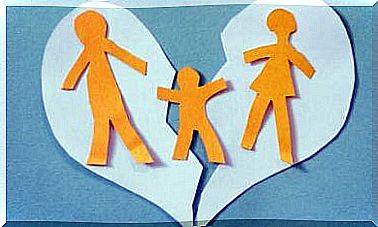Narcissistic Anger: A Dangerous Reaction

Shouting, raging, insulting, but also making use of passive aggression on the part of those who choose to do harm in a continuous but underground way. Narcissistic anger can manifest itself in many ways, but there is a tangible form of violence in all of them. This reaction occurs when the narcissist feels deeply offended, ignored or disappointed.
It is not a question of emotional mismanagement or lack of education. Narcissistic anger is a reflection of a personality disorder to which additional factors are added. The education received, the self-centeredness, the lack of empathy, the poor tolerance to frustration, the lack of impulse control and often even untreated trauma; all this helps to trace the profile of this complex reality.
However, although there are many who know or have lived with people with these characteristics, there is still one aspect that is not talked about much. When the narcissistic person reaches the limit and feels harmed or threatened, their behavior is as dangerous as it is exaggerated.

What is narcissistic anger?
It was the psychoanalyst Heinz Kohut who coined the term narcissistic anger in 1972. He defined such behavior as a form of aggression in which the narcissistic subject can manifest violent behavior.
The complex aspect is that, in general, this personality profile has a very sensitive tolerance limit and tends to get annoyed, offended and angry for a while.
This makes living with these people somewhat problematic and demanding, in an attempt to avoid offending them for fear that anger will explode. According to Kohut at the origin of this psychological reality in many cases there is an untreated or managed trauma.
How narcissistic anger manifests itself
The study conducted at the University of Iowa in 2015 supports a rather interesting hypothesis: narcissistic anger explodes when the sense of self that the person has built is damaged or scratched.
The problem is that the self-esteem of this psychological profile tends to be very low; which is why they perceive almost any event or phenomenon as a threat.
- Often even they don’t know what really triggered the anger. Sometimes they explode for no good reason. They do this because they have unconsciously processed any stimulus as a threat.
- Narcissistic anger can be both explosive and present in a passive-aggressive form.
- The first manifests itself with intense but labile explosions. The person can verbally attack the other or kick and punch walls and furniture. In some cases, the situation can escalate into physical violence.
- Passive-aggressive anger manifests itself in a much less striking but equally harmful way. An example is to stop talking to the other as a punishment, to ignore the person who has offended him or even to turn him against other people.
On the other hand, there is also a surprising aspect to this reaction. Typically, in non-narcissistic people, anger erupts after going through different emotional levels. That is, it is common to feel first a sense of bewilderment, then anxiety, then agitation, frustration, irritation and finally anger.
The person with narcissistic personality disorder, on the other hand, does not follow this sequence. Anger tends to explode suddenly and unexpectedly.
What are the causes of narcissistic anger?
The ego of a narcissistic person is very fragile. It doesn’t take much to hurt her and make her feel threatened. He often interprets any comment as an offense, a look as a mockery, a certain gesture as a sign of contempt.
They are wary and bad at managing understanding, reflection and objectivity. In the next few lines we will focus on three of the triggers of narcissistic anger:
A rather fragile sense of self
We talked about it at the beginning. In many cases there are trauma and painful experiences that have not been overcome. A bad childhood, parental disinterest or a dysfunctional family.
All these factors can lay the foundation for the development of this disorder. In this context, it is easy for the person to integrate feelings of anger, shame and not feeling loved or appreciated.
Such dimensions make it more difficult to build a sense of self, a secure and mature identity. Rather, they develop, as a means of defense, an armor that expresses a sense of verbiage, a need to be the center of attention, etc. When they don’t get it, all the accumulated anger emerges, all the mismanaged frustration.
The need to protect the ego
The narcissist is nobody, but he strives to appear better than others. To contradict him is to challenge him. Anyone who does this endangers that golden armor he has built so hard over time. If you don’t give it the attention it requires, it explodes; because we take away from him what he needs most: that reinforcement that feeds his low self-esteem.

Narcissistic anger and the underlying fear
It is good to know that narcissistic anger is not just a violent reaction, a spring that jumps out of the frustration of not having what you want. The essential component, in reality, is fear.
At the basis of this profile, in fact, lies the profound fear of showing one’s fragility. But also the fear of losing what is under their control, of falling off the pedestal, of showing the weaker side of the personality.
To conclude, the narcissist has very thin emotional skin, therefore, when his protective barriers collapse or he suffers an affront, he shows the worst of him. This characteristic produces serious repercussions at various levels of the subject’s life: personal, professional, financial.
It is a rather complex psychological reality, which requires the support of a professional and adequate therapy.









